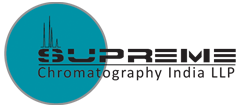ProteCol™ Specialty Phase
- ProteCol Chiral columns ensure the isolation and analysis of pure enantiomers.
- ProteCol HILIC range provides a polar stationary phase enabling the retention and separation of polar analytes using organic mobile phases.
- ProteCol SCX column has a high loading capacity and pressure limit.
- ProteCol PFP column is useful in the separation of epimers.
ProteCol™ Chiral
- ProteCol Chiral CHM is a modified cellulose coated on high purity, high performance spherical silica particles. The chemical modification includes the chemical bonding of 3 - chloro - 4 methylphenylcarbamate to cellulose. The use of cellulose modified with chlorinated phenyl groups provides for the separation for many previously unresolved or poorly resolved chiral mixtures.
- ProteCol Chiral CHC are polysaccharide coated chiral columns, manufactured using a unique production process of coating the proven chiral selector - tris - (3, 5 - dimethylphenyl) carbamoyl cellulose on high purity silica gel.
- ProteCol Chiral CHA polysaccharide coated chiral columns, are created using a unique production process of coating the proven chiral selector - tris - (3, 5 - dimethylphenyl) carbamoyl amylose on high purity silica gel.
- ProteCol Chiral CH4 uses a modified cellulose coated on high purity, high performance spherical silica particles and consists of the chemical bonding of 4 - chloro - 3 methylphenylcarbamate to cellulose. The use of cellulose modified with chlorinated phenyl groups provides for the separation for many previously unresolved or poorly resolved chiral mixtures.
ProteCol™ HILIC
HILIC chromatography uses mobile phases containing between 5 - 20% water for the retention of polar compounds. The ProteCol range of HILIC columns delivers you separation specific for your polar analyte analysis.
ProteCol HILIC - RPProteCol HILIC - RP columns deliver a combination of HILIC and reversed phase chromatography – perfect for samples containing polar and hydrophobic analytes. The composition of both the polyhydroxylated polymer and ODS groups bound to silica provides hydroxyl levels that are well above conventional hydroxyl and diol type stationary phases.
ProteCol HILIC - FLProteCol HILIC - FL is designed for retention and separation of polar and non - polar compounds that are not retained or separated on conventional reversed phase columns. It consists of a fluorinated based stationary phase bound to silica. This composition provides for excellent retention and peak shape for polar halogenated, polar amines and polar aromatic compounds.
ProteCol HILIC - HCProteCol HILIC - HC (high capacity) is composed of a polyhydroxylated polymer coated and bound to silica, providing hydroxyl levels that are well above conventional hydroxyl and diol type stationary phases. The chromatogram highlights the unique capability for ProteCol HILIC - HC, where toluene is less retained than uracil. Uracil has been traditionally used as an unretained marker for the determination of void volume, however with ProteCol HILIC - HC and an 80% acetonitrile mobile phase, uracil can be retained.
ProteCol HILIC - PIProteCol HILIC - PI consists of an aromatic amine based stationary phase bound to silica. This composition provides for excellent retention and peak shape for polar amine compounds.
ProteCol™ SCX
- High loading capacity and pressure limit
- Robust bonding technology
- High density bonding
- Bonding aromatic sulfonic acid groups
ProteCol™ PFP
PFP is a truly unique stationary phase with properties significantly different from ODS phases. This unique character results from bonded pentafluorophenyl groups imparting a pi - pi electron interaction, producing an enhanced retention for many compounds, particularly those that contain polarizable electrons. Many classes of compounds and naturally occurring chemicals also contain polarizable electrons and can be separated using PFP. PFP has been extremely useful in the separation of epimers. Epimers also exist in many natural mixtures such as pharmaceutically active natural paclitaxel.






